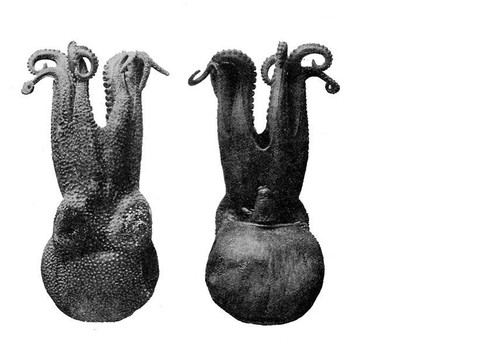Several species of Antarctic octopi have blue blood. The blue blood is caused by an excessive amount of the pigment haemocyanin that also allows the animals to receive enough oxygen to live at very cold temperatures.
The researches compared the blood pigment composition of a common Antarctic octopus species Pareledone charcoti with the pigment composition of the Australian Octopus pallidus and the Mediterranean Eledone moschata. The Antarctic species had 40 percent more haemocyanin than the other species. This level of haemocyanin is the highest known for any species of octopus.
The high levels of haemocyanin allow a higher rate of transfer of oxygen through the gills to the blood. Haemocyanin is not as efficient an oxygen transporter as other blood pigments like hemoglobin but it has the advantage of not freezing at low temperatures. The haemocyanin in Pareledone charcoti was found to have an oxygen release potential of 76.7 percent at 10 degrees Celsius. This is almost twice the rate for the same pigment in the southern species.
The Antarctic octopus species have adapted to cold waters by changing the pigment used to transport oxygen from the water through the gills to the blood. The researchers indicate there may have been a structural change in the pigment haemocyanin at some point in time that conferred the ability to live in cold waters to ancient ancestors of modern Antarctic octopi. The high levels of haemocyanin may also allow the octopi to survive increasing water temperatures that have resulted from climate change.















